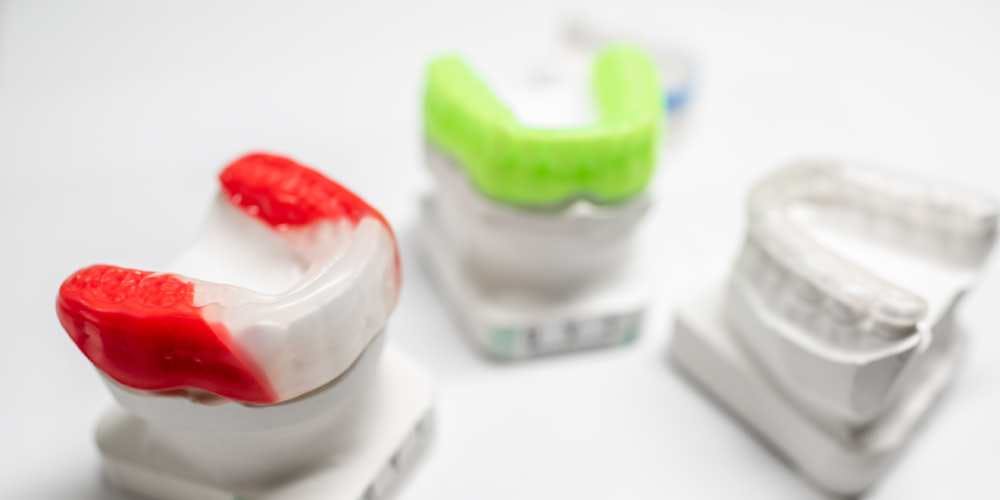Night Guard Versus Botox
Posted by Dr. Taner Cakmak on Mon, 24 Mar 2025
Compare night guards and Botox for jaw clenching, teeth grinding (bruxism), and TMJ disorders. Learn how each treatment works, their benefits, and which might be right for you. Find information on Botox frequency and candidacy.

Are you asking about whether a night guard or Botox is better for jaw clenching, teeth grinding (bruxism), or TMJ disorders?
Night Guard
- A dental appliance that cushions the teeth and prevents wear from grinding. It helps reduce jaw strain but doesn’t stop the underlying muscle activity.
How It Works:
- A custom-made acrylic or soft plastic device worn over the teeth while sleeping.
- Acts as a cushion to prevent direct contact between upper and lower teeth.
- Reduces pressure on the jaw and TMJ (temporomandibular joint).
Benefits:
- Protects Teeth - Prevents enamel wear and fractures from grinding.
- Reduces Jaw Strain - Eases muscle tension and helps prevent TMJ disorders.
- Prevents Headaches - Less strain on jaw muscles can reduce tension headaches.
- Cost-Effective - Long-term solution with minimal maintenance.
Botox for Bruxism/TMJ
- Description: Injected into the jaw muscles (masseter) to relax them, reducing clenching and grinding. It can relieve tension headaches and TMJ pain but requires periodic treatments.
How It Works:
- Injected into the masseter (jaw) and/or temporalis muscles.
- Temporarily relaxes the muscles, reducing their ability to clench and grind.
- Effects last about 3–6 months before needing another treatment.
Benefits:
- Reduces Clenching and Grinding - Helps with severe bruxism that causes pain.
- Relieves TMJ Pain - Eases jaw tension and discomfort.
- Prevents Headaches & Migraines - Can stop tension headaches caused by muscle overuse.
- Slimmer Jawline - Over time, relaxed muscles may lead to a more contoured face.
Which One is Better?
- If your main issue is tooth wear and protection → Night guard
- If you have severe jaw pain, tension headaches, or want muscle relaxation → Botox
- For comprehensive relief → Some people use both!
HOW FREQUENCY SHOULD I GET BOTOX
The frequency of Botox injections for jaw clenching, teeth grinding (bruxism), or TMJ disorders depends on how long the effects last and your individual needs.
Typical Botox Schedule for Bruxism/TMJ:
- Every 3 to 6 months – Most people need touch-ups 2 to 4 times per year.
- First treatment – Effects usually start within 3-7 days, peak at 2-4 weeks, and gradually wear off.
- Long-term use – Some people find they can go longer between treatments as their muscles weaken over time.
Factors Affecting Frequency:
- ✔ Severity of clenching/grinding – Stronger jaw muscles may need more frequent treatments.
- ✔ Metabolism – Faster metabolism = Botox wears off sooner.
- ✔ Dosage – Higher units last longer, but too much can weaken muscles too much.
- ✔ Personal preference – Some people prefer maintenance every 4 months, others can stretch it to 6 months.
Choosing Botox for bruxism, jaw clenching, or TMJ disorders depends on several factors. Here’s a guide to help determine if it’s the right option:
Who is a Good Candidate for Botox?
- ✅ Severe Clenching or Grinding – If your night guard isn’t enough to stop damage or pain.
- ✅ TMJ Pain and Tension – If you experience jaw soreness, stiffness, or clicking.
- ✅ Frequent Headaches or Migraines – Caused by jaw muscle overuse.
- ✅ Overdeveloped Jaw Muscles (Masseters) – If your face looks wider due to muscle growth from clenching.
- ✅ Tried Other Treatments with Limited Success – If physical therapy, stress management, or night guards haven’t fully helped.
Who Might Not Be a Good Candidate?
- ❌ Mild or Occasional Bruxism – A night guard may be enough.
- ❌ If You Have Muscle Weakness Issues – Botox relaxes muscles, so if you already have weak jaw muscles, it might not be ideal.
- ❌ Pregnant or Breastfeeding – Botox is not recommended during pregnancy.
- ❌ If You Prefer a Permanent Solution – Botox is temporary and requires repeat treatments.
Alternative Treatments to Consider Before Botox:
- 🦷 Night Guard – Protects teeth from grinding damage.
- 💪 Physical Therapy – Jaw exercises can strengthen and balance muscles.
- 🧘 Stress Management – Meditation, therapy, or relaxation techniques can reduce clenching.
- 🦷 Orthodontic Treatment – If misaligned teeth contribute to grinding, braces or Invisalign may help.
Dentist Kanata
We will gladly answer any questions you may have.
Ask QuestionsKanata South Dental offers the ability to request your dentist appointments online. Schedule an appointment now!
Book OnlineBy filling out the New Patient Forms ahead of time you will save significant time on your visit.
New Patient FormsLatest News
Veneers vs. Implants: What's the Difference and Which One is Right for You?
Fri, 17 Oct 2025If you're looking to improve your smile, you’ve probably come across two popular dental treatments: veneers and implants. While both can make a big differen...
Continue Reading